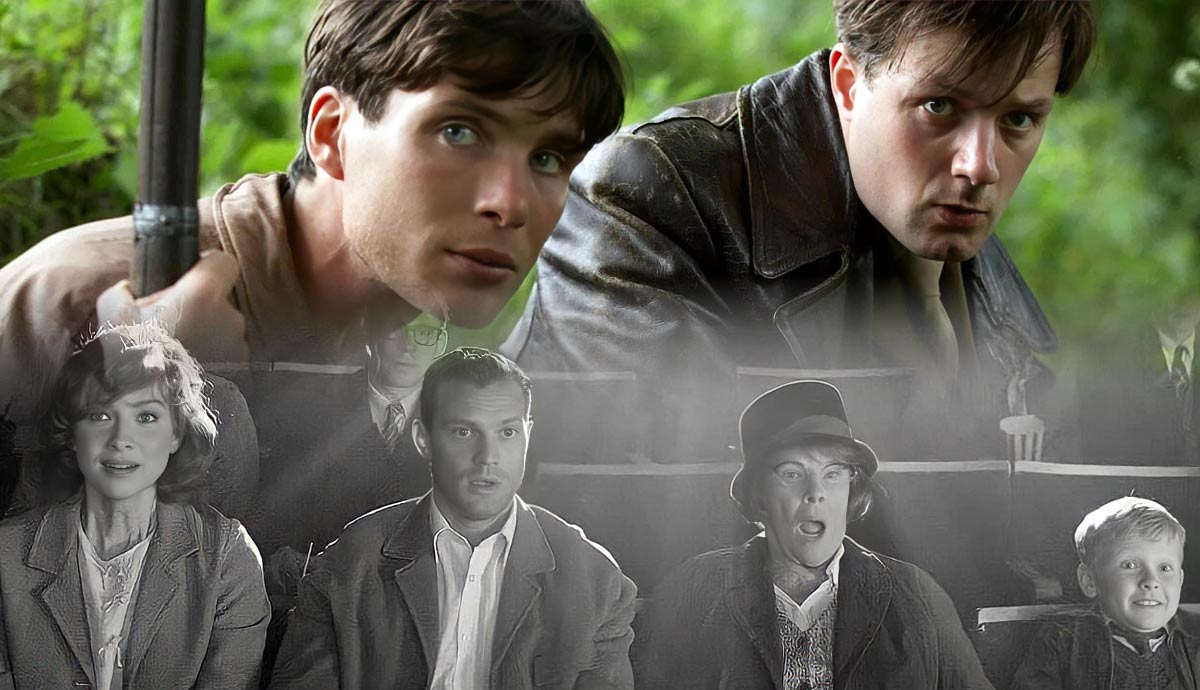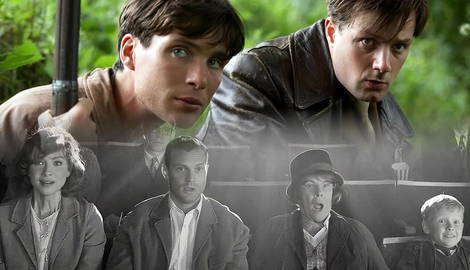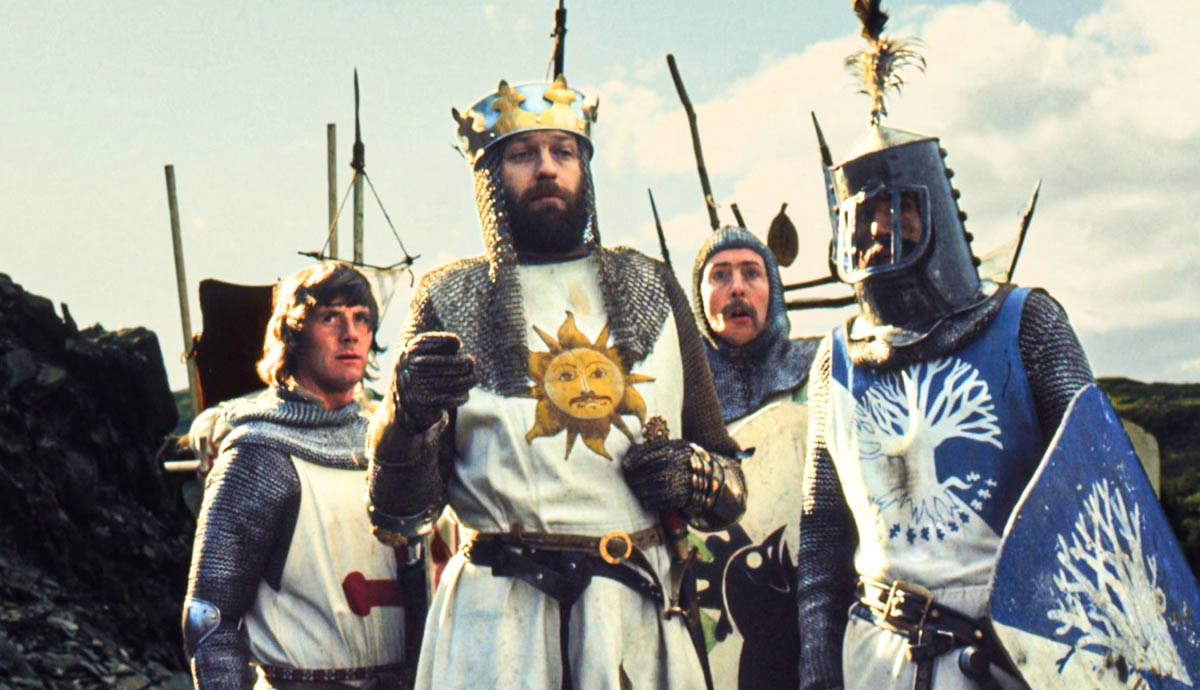
Over the years many films have been written, produced, and shot about (and in) Northern Ireland. This article will explore four films about the Troubles directed by four different directors, starting with ’71, Yann Demange’s feature directorial debut. It will also discuss how these filmmakers, from different countries, have dealt with the history of Northern Ireland. Through their works and unique perspectives, we will try and understand why Northern Ireland continues to inspire filmmakers from across Europe and what it is in the history of this country that continues to resonate deeply with audiences worldwide.
1. ’71: A British Soldier on the Streets of Belfast

“Posh c*nts telling thick c*nts to kill poor c*nts. That’s the Army for you.” This is perhaps the most iconic and befitting line of ’71 (2014), directed by French filmmaker Yann Demange in his feature directorial debut and written by Scottish screenwriter Gregory Burke. The film centers around Gary Hook (Jack O’Connell), a new recruit in the British Army.
It is 1971, one of the worst years of the Troubles, and Hook’s unit is deployed on the streets of Belfast to provide support to the RUC (Royal Ulster Constabulary), the (overwhelmingly Protestant) Northern Ireland police force. During a house-to-house search in the city’s Catholic neighborhood, the RUC men start beating and verbally abusing people outside (and inside) their homes. A crowd gathers. Young men and women begin hurling stones at the British soldiers present in the area, who are ill-equipped for the riot.

The soldiers had been instructed not to wear their riot gear to avoid provoking anyone. Eventually, as violence escalates, Hook is left behind by his retreating unit. While running for his life, he hides in a toilet, and behind its walls, Hook realizes he can trust no one. Why? Because he is a symbol — not for the viewers, but for all the other characters in the film.
He is a symbol for Billy (Corey McKinley), the loyalist child whose father was killed by the IRA (Irish Republican Army) and who is adamant he is going to join the Ulster Rifles to kill as many “Fenian bastards” as possible. He is a symbol for Paul Haggerty (Martin McCann), the Provisional IRA gunman who shoots Hook’s fellow soldier Thompson (Jack Lowden) at point-blank range, backed by his blank-faced friend Sean (Barry Keoghan).

He is a symbol for Sergeant Lewis (Paul Anderson), a member of the Military Reaction Force (MRF), the British Army’s counter-insurgency cover unit, which Hook glimpses while building a bomb with a Loyalist group. He is also a symbol for Brigid (Charlie Murphy), the daughter of Eamon (Richard Dormer), the former army medic who rescues Hook and utters the iconic line from the beginning of the article as he tends to his wounds. For the British Army, Hook is just “a piece of meat.”
Through his ordeal, we catch a glimpse of a profoundly sectarian society. In Northern Ireland in the 1970s, those who decided not to actively take sides and fight for a cause often found themselves spending their lives dodging bullets, trying to survive, trying not to end up in the wrong place at the wrong time, which is exactly where Hook ends up.
This is perhaps what ’71 captured best in its accurate depiction of the Troubles. In a sectarian society, everything is a symbol. Anyone can become a symbol. As soon as Gary Hook steps out of the army truck, he stops being a human being. He stops being a “Derbyshire lad” and is transformed into a symbol — to be valued and cherished or demonized and destroyed. Shortly after meeting him, Billy the Loyalist kid remarks, “You’re not a Catholic, not with a name like that,” and proceeds to ask him the dreaded question, “Are you a Protestant?”
Hook shrugs, he doesn’t know. Billy stops in his tracks, stunned, “You don’t know?” In war, there is no place for subtlety.
2. Belfast: Through the Eyes of a Protestant Kid

A major 1960s poll found that most Northern Irish people were willing to justify armed struggle. Catholics and Protestants alike saw themselves as members of a community under attack.
If ’71 captures 1970s Belfast through the eyes of a man on the run, Belfast (2021) is above all a film about a child’s happy childhood in a city at war and about a family that wants to live in peace. Everything, from the Troubles to human relationships, comes through the scrutiny of nine-year-old Buddy (Jude Hill).
Written and directed by Kenneth Branagh and shot in black-and-white, Belfast captures the outbreak of the Troubles and the first August riots that kick-started the conflict, pitting one neighbor against another, and one family against another. The Troubles officially began with an uprising in August 1969, when the Bogside, Derry’s overwhelmingly Catholic neighborhood, witnessed the full-scale uprising of its inhabitants.

To prevent the RUC from entering their district, people began erecting barriers and throwing bricks at armored police vehicles. The RUC men responded with tear gas and stones. When they finally entered the Bogside, Protestant mobs charged in after them. This event went down in history as the Battle of the Bogside.
Branagh’s admittedly autobiographical film focuses on the August 1969 riots in Belfast as seen through the eyes of Buddy and his family, his Ma (Caitríona Balfe), his Pa (Jamie Dorman), his Granny (Judi Dench) and his beloved Pop (Ciarán Hinds). They are common people stuck in an uncommon situation. As their world falls apart, they remain true to their values, refusing to give in to violence, even, and perhaps especially, when violence takes the form of a nine-year-old stealing a box of laundry detergent from a riot-hit supermarket.

But how do you remain true to your morals when everyone around you urges you to take sides and to fight for the “cause”? How do you set an example for your children when the world around you seems to equate the desire for peace with cowardice and treachery?
Spoiler Alert. Belfast ends with Buddy’s family packing up and leaving for England, as Branagh’s own family did in early 1970. At that time, Branagh was nine, just like Buddy. In the end, violence won out. A peaceful family is forced to leave their home and everything else, with the children’s grandmother waving them goodbye from afar.
But is this the case? Or is it the other way around? After all, sectarian violence fails to infiltrate Buddy’s family. It fails to divide it, to turn one family member against the other (as often happened). Buddy’s family resists, albeit while moving away. Belfast never succumbs to the somber tones of other films centered around the Troubles. All in all, this is a sweet coming-of-age gem, is gorgeous to watch (and for that, we have Haris Zambarloukos, the cinematographer, to thank), and is filled with a kind of proactive nostalgia rarely seen nowadays.
3. The Wind That Shakes the Barley: Across the Irish Island

Let’s step back in time with British filmmaker Ken Loach. Loach depicts the birth of Northern Ireland in his award-winning film The Wind That Shakes the Barley (2006). Loach’s film tells the story of two brothers from County Cork, Ireland, Damien (Cillian Murphy), and Teddy O’Donovan (Pádraic Delaney) over several years, from the War of Independence (1919-1921) to the Irish Civil War (1922-1923).
In Belfast, Ma and Pa choose to leave Northern Ireland and settle in Great Britain, away from the threat of violence. In so doing, they save their family, securing a future for their children away from war and sectarianism. In The Wind that Shakes the Barley, Damien, a promising young doctor about to leave Ireland to practice medicine in London, decides to stay. He decides to side with his brother and fight for a free Ireland.

This decision will change his life forever. It will trigger a series of events that will permanently alter his relationship with his brother Teddy. In discussing the upheavals caused by the Civil War, the film investigates the impact of history on family and friends, how history and the fight for a common cause—an independent Ireland—brings two brothers together only to later separate them in the most brutal way. Just like Belfast, this is a film about human beings and about making difficult decisions in times of war.
The 1921 Anglo-Irish Treaty, commonly known as The Treaty, ended the Irish War of Independence and led to the creation of the Irish Free State, no longer a part of the UK but still a dominion within the British Empire.

Through the lives of Damien and Teddy O’Donovan, and their friends and fellow fighters, we also get a glimpse of what was happening in Ulster after Partition, in those Six Counties that many anti-Treaty Irishmen and women felt the Treaty had betrayed and left behind. During a heated debate, Sinéad (Orla Fitzgerald), Damian’s love interest, who is staunchly anti-Treaty, reminds the group that “my cousins are on the streets of Belfast, burned from their homes by loyalist mobs,” and that there are “refugees all over Dublin.” In two years, in fact, between July 1920 and July 1922, 557 people were killed, according to figures provided by Thomas Hennessey. Most of them were Catholics, 172 were Protestants, and 82 were officers of the police and the British army.
As Belfast Catholics were being driven out of their houses en masse, and Catholic socialist workers kept losing their jobs, the Irish Republican Army (IRA) acted on behalf of the Northern Irish Catholics by raiding police barracks and ambushing police officers on patrol. Finally, in 1949, Ireland left the Commonwealth, and the independent Republic of Ireland was born.
Northern Ireland, with its Protestant majority “a Protestant state for Protestant people,” remained part of the UK. The Partition, perfectly captured by Ken Loach in The Wind that Shakes the Barley, helped set the stage for the conflict that would ravage Northern Ireland between 1969 and the late 1990s.
4. In the Name of the Father

From the story of two brothers fighting for Ireland’s independence to the (true) story of a father and son falsely accused of terrorism during the Troubles. In Jim Sheridan’s In the Name of the Father (1993), the father, Patrick “Giuseppe” Conlon, is majestically played by the late Pete Postlethwaite. Daniel Day-Lewis stars in the role of the son, Gerry Conlon, one of the Guildford Four.
Along with Paul Hill, Patrick Armstrong, and Carole Richardson, Gerry was accused of being one of the IRA members responsible for the bombs that destroyed two pubs in Guildford Surrey on October 5, 1974. In 1975 they were all convicted and sentenced to life. Seven more people, known as the Maguire Seven, were charged with possessing the nitro-glycerine that the IRA allegedly used to make the bombs. They had all been framed.

The Gerry Conlon portrayed in Sheridan’s film couldn’t be more different from his father: he is feckless, irresponsible, a naïve drifter, and a petty thief. Giuseppe, on the other hand, is a hard-working man, loyal to his principles and ethics. It doesn’t matter. He will end up in jail alongside his son. It took more than 20 years and the hard and scrupulous work of British solicitor Gareth Peirce (played by Emma Thompson) to overturn the convictions of Gerry and the other Guildford Four.
In 1989, they finally walked out of the Old Bailey, the Central Criminal Court of England and Wales, in London. Unfortunately, Giuseppe Conlon had passed away by then. The world had changed, but the Troubles were still ongoing in Northern Ireland and Great Britain. Even when Sheridan’s film came out, four years later, the Troubles were far from over.

In the Name of the Father was nominated for seven Oscars at the 66th Academy Awards. Ten years after the release of the film, Sheridan responded to the critics accusing his film of historical inaccuracies explaining that when the film came out “I was accused of lying in In the Name of the Father, but the real lie was saying it was a film about the Guildford Four when really it was about a non-violent parent.” It is through the example set by Giuseppe, by his life, his words, and his actions, that Gerry Conlon is able to change and evolve, to become a better man determined to prove to the world his and his father’s innocence. In the Name of the Father is essentially a film about human relations, about how they can be disrupted and altered, for better or for worse, by war.
Just like Belfast and The Wind that Shakes the Barley, Sheridan’s film shows us the long-term effects of violence, how it affects future generations, and how it inherently possesses the potential to generate further grief and death. This is something Professor Marianne Hirsch has discussed at length in her seminal book The Generation of Postmemory, albeit in the context of the Holocaust. Postmemory, Hirsch writes, “describes the relationship that the ‘generation after’ bears to the personal, collective, and cultural trauma of those who came before – to experiences they ‘remember’ only by means of the stories, images, and behaviors among which they grew up” (Hirsch, 2012). “These events,” Hirsch adds, “happened in the past, but their effects continue into the present.”
To put it with Jim Sheridan, “the more these situations are talked about, the less the rage is likely to convert to violence. Telling those stories matters.”










